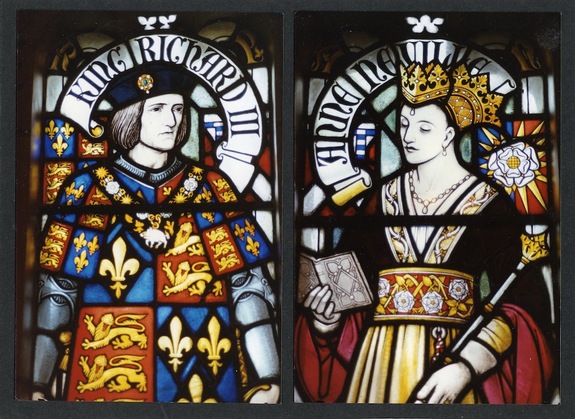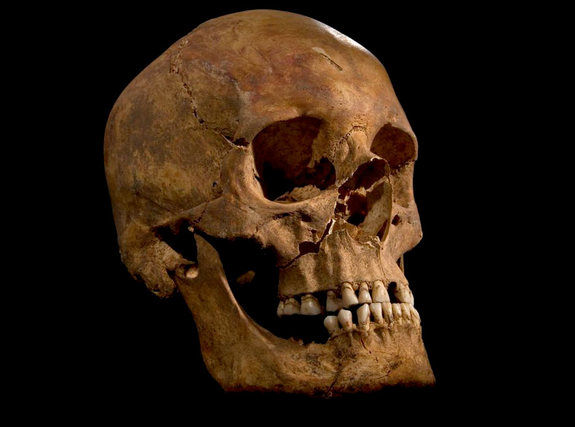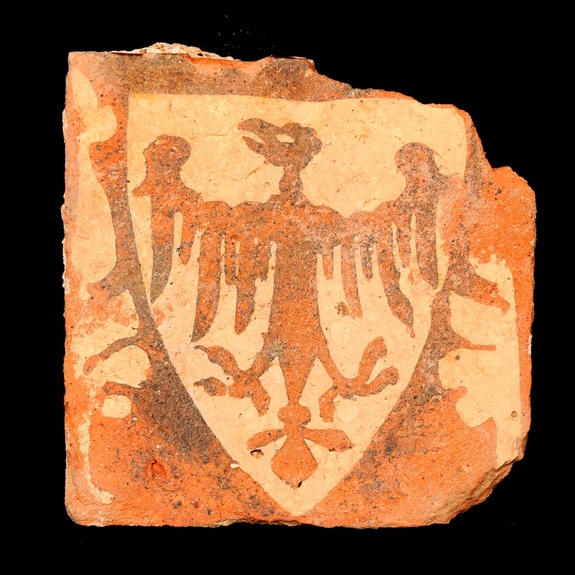King Richard III’s last moments were likely quick but terrifying, according to a new study of the death wounds of the last king of England to die in battle.
The last king of the Plantagenet dynasty faced his death at the Battle of Bosworth Field on Aug. 22, 1485, only two years after ascending the throne. The battle was the deciding clash in the long-running Wars of the Roses, and ended with the establishment of Henry Tudor as the new English monarch.
But Richard III’s last moments were the stuff of legend alone, as the king’s body was lost until September 2012, when archaeologists excavated it from under a parking lot in Leicester, England. Now, a very delayed postmortem examination reveals that of nearly a dozen wounds on Richard’s body, only two were likely candidates for the fatal blow. Both were delivered to the back of the head
Battle scars
The initial analysis of Richard III’s skeleton highlighted the king’s scoliosis and battle scars, including at least eight wounds on the skull. In the new postmortem, detailed today (Sept. 16) in the medical journal The Lancet, scientists took a deeper look, recording 11 injuries on Richard’s skeleton that occurred around the time of death, including nine injuries to the skull.
Chart shows dagger, sword and halberd wounds to the king’s skeleton.A study of the Medieval king’s skeleton reveals traumatic wounds he received at the time of death.
Three of the skull injuries were “shaving injuries” to the top of the head, said study researcher Sarah Hainsworth, a professor of materials and forensic engineering at the University of Leicester. These shallow, glancing blows would have sliced the scalp and shaved the skull bone. They would have bled heavily, but would not have been fatal unless untreated. Notably, patterns of striations in the wounds revealed the same weapon probably created these injuries, Hainsworth told Live Science.
“If you took a block of cheese into your kitchen and used a serrated blade to cut it, you would see these marks that are characteristic of the blade,” she said. Those marks are very similar across the three skull wounds.
But Richard III was almost certainly brought down by more than one man — and more than one weapon. A knife or dagger likely left a 0.4-inch-long (10 millimeters) linear wound on his right lower jaw; he also had a penetrating dagger wound to his right cheek. A keyhole-shaped injury to the top of his head was almost certainly caused by a rondel dagger, a needlelike blade often used in the late Middle Ages. That wound would have caused both internal and external bleeding, but would not have been immediately fatal.
The deathblows likely came from a sword or a bill or halberd, which were bladed weapons on poles often used on the battlefield. At the base of Richard III’s skull, researchers found two wounds, one 2.4 by 2.2 inches (60 by 55 mm) and one 1.21 by 0.67 inches (32 by 17 mm). This wound was in line with another, about 4 inches (105 mm) away on the internal wall of the skull, as well as in line with damage to the top vertebrae. In other words, it appears that the blade entered the head, sliced through the brain and hit the opposite side of the skull.
The postmortem also revealed two wounds to Richard III’s body. One, likely delivered as a blow from behind with a fine-edged dagger, damaged the right 10th rib. Another, a 1.2-inch-long (30 mm) scrape to the pelvis, delivered through the right buttock, had the potential to be fatal. But that wound was almost certainly delivered after death, Hainsworth said, because Richard III was wearing armor on the battlefield that would have protected him.
This CT reconstruction shows how a blade could have entered Richard III’s right buttock, scraping the pelvis as it went.Pin It This CT reconstruction shows how a blade could have entered Richard III’s right buttock, scraping the pelvis as it went.
Interpreting trauma on a 500-year-old skeleton is difficult, because soft tissue is missing, Heather Bonney, a human remains researcher at the Natural History Museum, London, who was not involved in the research, said in a statement. However, Bonney said, the findings provide a “compelling account” of Richard III’s death.
Last moments
Either of the penetrating head wounds would have been fatal very quickly, Hainsworth said. The findings mesh with near-contemporary accounts of the battle, which hold that Richard III’s horse had become mired in mud, forcing him to dismount. He had either removed or lost his helmet, leaving his head and face vulnerable.
“He was surrounded, probably by a number of people with medieval arms,” Hainsworth said. “He was a warrior, he was a knight, he was a trained fighter, but he would have seen other people die on the battlefield, so he would be very aware of, if you like, what was in store for him.”
The researchers can’t say for sure in what order the wounds were delivered, but historical accounts hold that Richard was kneeling with his head bent forward when the fatal wounds were delivered — a tale consistent with the large wounds to the base of the skull. Richard’s face was actually less mutilated than many battle casualties of the time, Hainsworth said. The choice to spare his face was likely deliberate, she said, as the victors would want to leave no doubt that it was really Richard they had killed.
After death, Richard’s body was stripped of armor and slung over a horse to be taken to Leicester for public display. It was then, Hainsworth said, that the wounds to the back and buttock were likely made as a final humiliation to the defeated king.
“It would have probably been quite quick,” Hainsworth said of Richard III’s death. “But, I would imagine, nonetheless quite frightening.”




